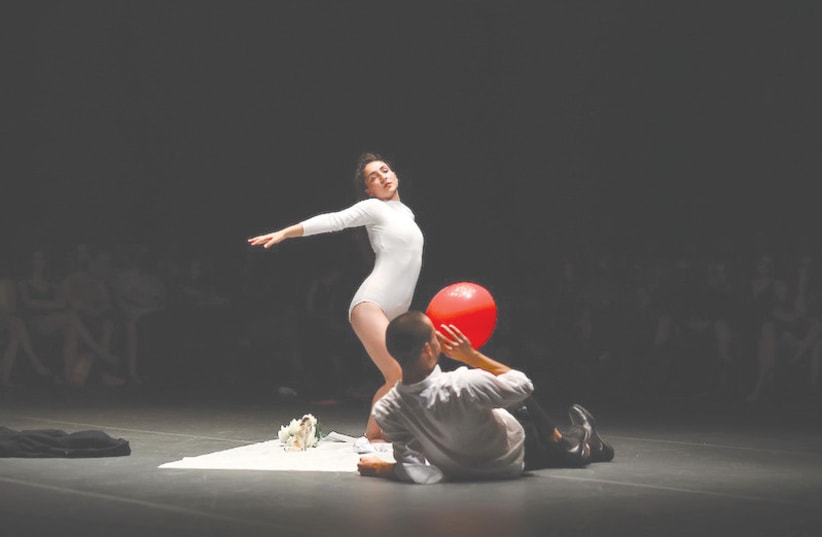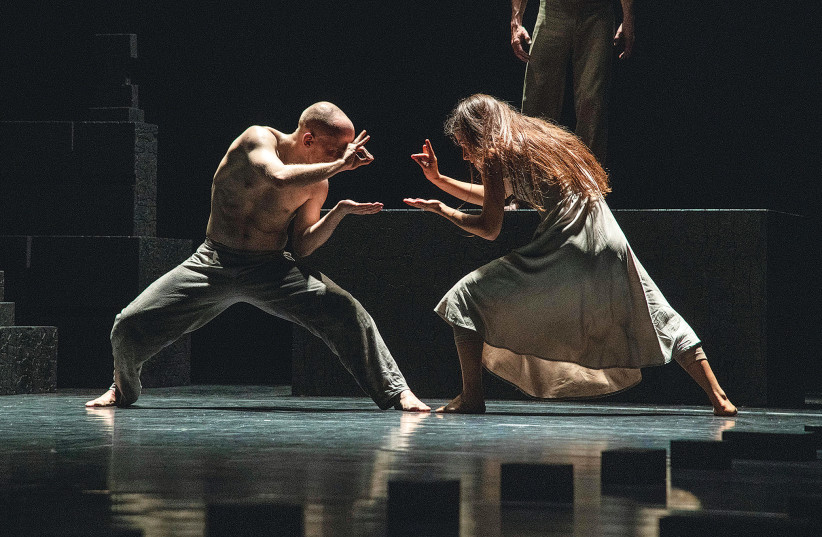When Dana Ruttenberg circulates in the local dance community, she is constantly compiling a mental list of artists who might be a good fit for a very unusual project.
These individuals have to be up for anything, willing to go with the flow, and be capable of working under stress. And while this description does not fit everyone making dance in Israel, Ruttenberg has developed a type of sixth sense for profiling those whom it does.
This month, Ruttenberg will host the 10th annual Project 48, which she describes as a “blind date into the unknown.” In this event, which, as the title would imply, lasts for two days only, choreographers, dancers and outside eyes (artists not necessarily from the dance field) come together for two rounds of instantaneous creative processes, each of which culminates in a performance with a live audience.
The list of previous participants is impressive, to say the least, and boasts many intriguing and influential artists.“All year, I look and think and listen about what is happening around, I go see things, I listen to who is working with who. When the project starts to come together, I make phone calls and I try to see if it’s right for the person, if they suit the project, and if it’s good for them. It can be character or timing that determines if it is a good match. It needs to come at the right time, to answer some need,” explains Ruttenberg over the phone.
Over the past decade, her phone calls have been met with enthusiasm but also with trepidation and occasionally refusal. “A lot of choreographers tell me that they don’t work like this. I tell them that I don’t ride a roller coaster to work each day; I take my car or the bus. I ride the roller coaster once a year.”
On the first evening of Project 48, the 27 chosen artists gather at the Kibbutzim College’s Shalom Meir Tower location for the first lottery, which determines the teams for the first round.
“This year we have a collaboration with the Kibbutzim College’s dance department, and during the year there will be a Project 48 with their students. There’s a lot of significance to where the rehearsals take place; the studio spaces really influence the process. I really believe that we need to strengthen the bond between the academic institutions and the professional field.”
Once the groups have formed and said hello, Ruttenberg will give each team the video reference she has chosen to catapult the groups into a creative process.
“I try to feel the field,” explains Ruttenberg of how she selects the references. “The reference can touch on a nerve, it can be something political, something taboo socially or even artistically.
"In previous years there was a mockumentary of Marina Abramovic in which Kate Blanchett plays Marina Abramovic. In the same edition, the second reference was a video of the return of the young men dancing in the airport upon returning from Ayia Napa."
"Two months before, I can pick something and, in this world, and this country, things can come up a week before that will require attention.”
Ruttenberg adds that she has references picked for the upcoming edition but is keeping a close eye on the news in case a more pressing catalyst presents itself.
Twenty-four hours after receiving the reference, the teams will arrive at the Suzanne Dellal Center for the performance. This is the fifth year that Project 48 is being hosted by Batsheva Dance Company’s Batsheva Hosts series.
Changes over the years
AS PROJECT 48 reaches its 10th birthday, Ruttenberg takes a moment to reflect on the changes that she has gone through, personally and professionally, since initiating the project.
“When I started it, I didn’t have kids. Oren, my partner, shot the livestreaming video. When I think about it, I ask myself, Who was with the kids? and then remember we didn’t have them.
“The field changed a lot in that time, too. When I started it, there weren’t a lot of platforms for experiments, and the dance cliques were very separate. Today there are lots more festivals and platforms; choreographers are artistic directors; people dance in other people’s works."
"There have been more residencies and works in progress showings. Social media has changed things; people share in real time on Instagram. When we started, we had to figure out how to stream something that was happening in real time. Things that were part of the format then became part of our lives.”
Ruttenberg goes on to say that Project 48 has been adopted by dance studios, high school dance departments and academic institutions throughout Israel.
“Institutions have come to understand the importance of the immediacy and the lottery format and their power to move things. We did a collaboration with University of the Arts in Philadelphia and Israeli artists, and Project 48 happens each year in the International Dance Village on Kibbutz Ga’aton.”
A short process
And though the creative process is short, the pieces made during Project 48 are completely real. Some argue that they are better than most works made over long creative processes.
This theory has been reflected in the sold-out shows of each edition since the first year.
“For the audience, seeing a show that is one-time-only is very special. There is this vibration,” she says. “For the performers, it’s like going on a trip that you know you’ll have one meal on. When you stop to eat, you take everything out of the cooler. You don’t save anything for later.”
Project 48 will take place on July 28 and 29 at Tel Aviv’s Suzanne Dellal Center. For tickets, visit www.batsheva.co.il

